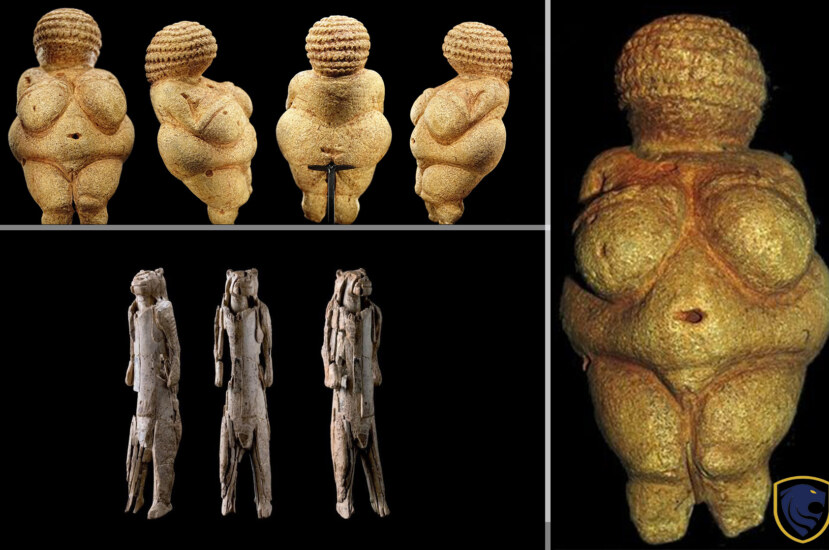Sculptures, statues, and carvings are art techniques widely used since ancient times. This art has improved for thousands of years. Historians have discovered some old traces of sculpturing in their investigations. Studying art and how it has evolved and changed is very interesting. Over the years, the materials and types of equipment that they have used have changed. Also, pieces that have been found in different countries show completely different features.
Tan-Tan sculptures
Archaeology exposed the first sculptures improved by human hands on November 4th, 2014. It is a sculpture by Alberto Giacometti, ‘Chariot’. Moreover, it was sold at Sotheby’s in New York for $100,965,000.
The significance of this narrative is not that it broke the hundred-million-dollar threshold. But that piece has captivated human minds. Also, have been part of the hominid mind, for half a million years.
The Tan-Tan sculpture which was found in Morocco at an open location among ancient river deposits of the Draa river is now the earliest three-dimensional portrayal of a human ever found. It has been estimated to be between 500,000 and 300,000 years old and is Acheulian. It is a little over 1 cm in diameter and about 6 cm tall.

Tan-Tan sculptures
This little quartzite stone has a general form that looks like a human being. Likely, the pebble was just retained because someone noted its human shape after finding it close to stone implements. Although though it is fully natural, it looks to have undergone manual interaction. A closer look shows that this form may have been emphasized by the intentional modification of the body’s inherent grooves.
Berekhat sculptures
A 35mm-long pebble of volcanic rock was found in 1981 at the Berekhat Ram site on the Golan Heights by archaeologist N. Goren-Inbar. The pebble stood out because it had the appearance of a feminine person. Moreover, the sculpted grooves on the sides and around the neck of the Berekhat Ram sculpture have been proven to be intentional alterations. Further, are not present on any other scoria that has been discovered nearby.
Alexander Marshak, an archaeologist, used an electron microscope to analyze the rock sculpture. He concluded that hominid hands had improved to create this art piece. According to dating, someone who lived 250,000–280,000 years ago is the artist of this sculpture.

Berekhat sculptures
The hominins who worked on their separate works would have been unaware of their future significance, much as Giacometti would not have known the outcome of the Sotheby’s sale when he made “Chariot”.
Lion-man
This artifact, which is between 35,000 and 40,000 years old, was discovered in Germany’s Hohlenstein-Stadel. The material used to construct this sculpture is ivory.
It is now shown in the Lion-Human Löwenmensch figure from Hohlenstein-Stadel.
The Lion-man is one of the world’s oldest sculptures. In 1939, it was found in a cave in Germany. The sculpture was made in the Paleolithic Period, according to archaeologists.
When seen from afar, the figure seems to be a person with a lion’s head. But, this figure seems to be a person with a lion’s head. The figure is carved from mammoth ivory and is a work of zoomorphic art. Moreover, the grooves show that the sculpture was carved out using a flint stone knife.

Lion-man
There is disagreement over the Lion-true man’s gender. Others claim that the plate on the figurine’s belly represents a flaccid penis. Some people think it’s a pubic triangle. The figure is rather little, though. Its dimensions are just 12 inches in height and 2.2 inches broad by 2.3 inches thick.
Venus of Hohle Fels
The tiny ivory sculpture of a female figure, known as the Venus of Hohle Fels, was discovered in 2008 during archaeological operations at the Hohle Fels Cave in southwest Germany. According to historians, this statue has been created during the Aurignacian civilization. Moreover, It is considered the oldest known Venus figure and the earliest instance of figurative known to archaeology. It dates to between 38,000 and 33,000 BC.

Venus of Hohle Fels
As compared to later female figurines like the Venus of Willendorf, and the Venus of Hohle Fels, this exhibits a variety of unique qualities that are uncommon. Yet because of its astonishing age, we can now better understand the development of Upper Paleolithic art. Also, it helps to realize how much more advanced the Aurignacian civilization was than previously assumed. Around Hohlenstein Mountain, there were also many other, equally special examples of portable art. But none of them got their own show.
Venus of Willendorf
This Paleolithic piece, which is between 25,000 and 30,000 years old, was discovered in Lower Austria near Willendorf. Limestone is used to create it. Currently, you may see it at Vienna, Austria’s Natural History Museum.
The Venus of Willendorf was found in August 1908 while being researched under the supervision of Josef Bayer, Josef Szombathy, and Hugo Obermaier. But the interesting fact is that there is no limestone in the surrounding area.

Venus of Willendorf
This implies that the figure was created somewhere else and was simply moved to the location where it was found. Moreover, it has a red ochre tinge. This sculpture is thought to represent the Venus of Willendorf. As Venus is simply a symbol of fertility. Some people prefer to call them “woman figurines.” However, its origin, production process, and even its cultural importance are all poorly understood.
Venus of Dolni Vestonice
The Gravettian era is the period in which considered that the Venus of Dolni Vestonice is sculptured. It dates to between 24,000 and 27,000 BC. With a clay covering body that was burned at a lower temperature, this peice is among the earliest known ceramic figurines.

Venus of Dolni Vestonice
It is thought to be the first-ever sculpture made from fire-baked ceramics. The experts think the fingerprint on the statue is that of a young person. Moreover, after discovering and examining it they say probably that should be a child between 10-15 years. South Moravia, Czechoslovakia is where the Venus of Dolni Vestonice was found in 1925.
Woolly Mammoth Figurine
Archaeologists discovered the first complete woolly mammoth sculpture in the Swabian Jura in 2007. It is generally agreed that the discovery, which also shows a number of additional figurines, was made at least 35,000 years ago. Moreover, it is said that it was created by the earliest known modern humans. The mammoth’s complete condition made the discovery unusual. Also, it is thought to be the oldest ivory sculpture ever found. Little in size, the woolly mammoth sculpture is barely 3.7 centimeters long and weighs 7.5 kilos.

Woolly Mammoth Figurine
It also features exquisitely detailed engravings, a slender body, and a sharp tail. In addition, its powerful legs, and beautifuly arched trunk truly distinguishes it from other animals.
This small sculpture is exhibited on the soles of its feet. The Vogelherd Cave, made famous after undergoing its initial excavation in 1931. It revealed a total of five ivory mammoth sculptures from the Upper Paleolithic period.




